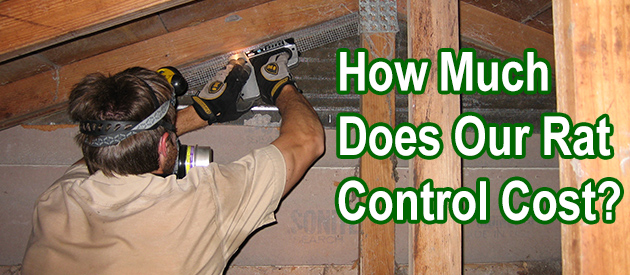Bibb County, Macon Rat Control Situation:
Hi David, I'm trying to catch/kill a rat in my garage. I've set 3 snap traps and he has "snapped" all three of them but still got away. I did notice some blood on the 3rd snap trap but that's it. How do you think he got away from all 3? Is he too big for the traps to be effective? or was his head just not in the right place when the trap snapped? I placed them all along walls with the bait close to the wall. I've reset all my traps but so far he appears scared to go towards any of them. Any ideas?
Hi - I live in Manufactured house in a heavy wooded area. I am not sure if I have mice or rats, but I do have problems occasionally and too late already used poison. Can you tell me the average charge to hire someone and also where we might look for opening in manufactured house as there is no attic and only a crawl space underneath the house. I am terrified of these critters and do not want them in my house. Will they be attracted bu rawhide and such types of dog bones? As I have two dogs and it is hard to keep track of there chew stuff they like to hide. Thanks for any advice you can spare.
Macon Rat Control Tip of The Week
Are Cats Good at Keeping Rats Away?
When it comes to removing rats from homes, the use of cats in hunting these rodents is one of the best natural ways of getting that done. Cats and rats are natural enemies; hence cats are good at keeping rats away. The only issue with keeping cats to remove rats from your home is that there is a high probability of it being prone to catching other non-target animals like frogs, birds, and lizards. Also, there are no guarantees that the cat you bring into your home to keep rats away will help catch the rat within a specific time.
Apart from the hunting skills that cats use to remove rats, the scent of a cat will also make rats stay away from your home. Rats have a well-developed sense of smell and can easily pick up slight scents. With this, they can sense the presence of a cat in a particular area and stay as far as possible away from it. This survival instinct of rats will send them packing.
But for this to work the way you want it to, you need to find a cat that displays typical hunting behavior. Naturally, cats do have hunting instincts and the urge to catch rats. But this only gets triggered when the right environment is in place or the cats are encouraged to do so.
If you want a cat with a good hunting instinct, the first thing you need to do is to make inquiries as to whether the mother of the kitten was a good hunter or not. Cats learn the required hunting skills from their mother. If you want the cat you will be introducing into your home to be a good hunter, it will need to learn these hunting skills from its mother.
Are cats good at keeping rats away?
When it comes to removing rats from homes, the use of cats in hunting these rodents is one of the best natural ways of getting that done. Cats and rats are natural enemies; hence cats are good at keeping rats away. The only issue with keeping cats to remove rats from your home is that there is a high probability of it being prone to catching other non-target animals like frogs, birds, and lizards. Also, there are no guarantees that the cat you bring into your home to keep rats away will help catch the rat within a specific time.
Apart from the hunting skills that cats use to remove rats, the scent of a cat will also make rats stay away from your home. Rats have a well-developed sense of smell and can easily pick up slight scents. With this, they can sense the presence of a cat in a particular area and stay as far as possible away from it. This survival instinct of rats will send them packing.
But for this to work the way you want it to, you need to find a cat that displays typical hunting behavior. Naturally, cats do have hunting instincts and the urge to catch rats. But this only gets triggered when the right environment is in place or the cats are encouraged to do so.
If you want a cat with a good hunting instinct, the first thing you need to do is to make inquiries as to whether the mother of the kitten was a good hunter or not. Cats learn the required hunting skills from their mother. If you want the cat you will be introducing into your home to be a good hunter, it will need to learn these hunting skills from its mother.


